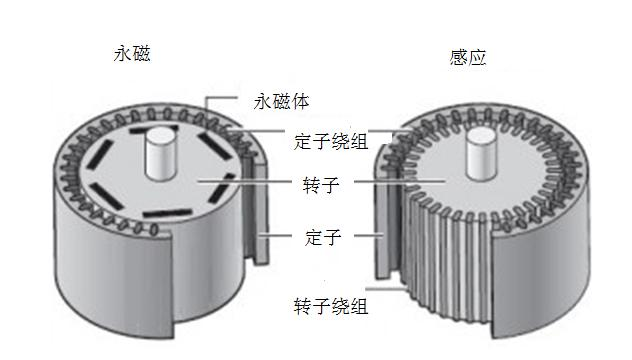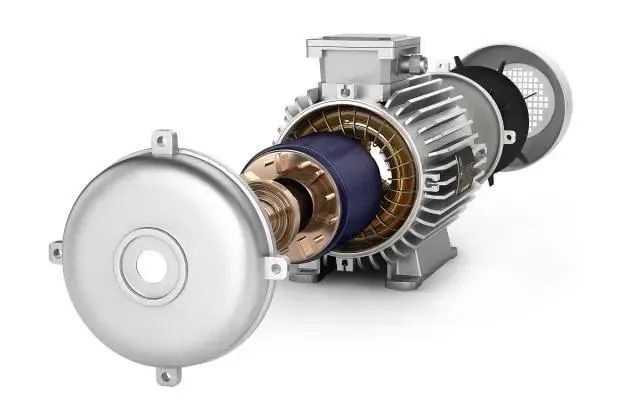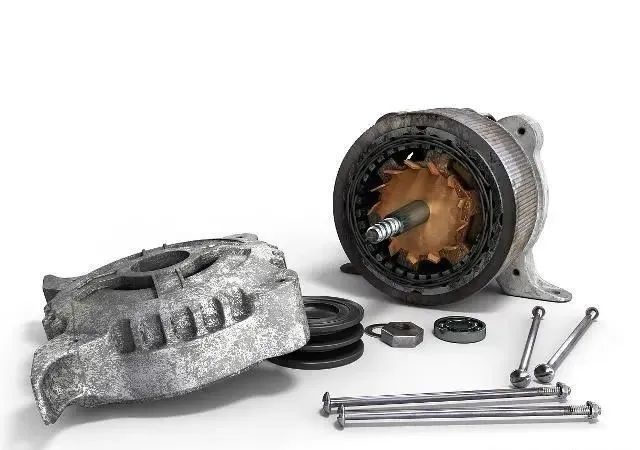AC induction motor or permanent magnet synchronous motor, which one is more efficient?
In industrial and commercial applications, most pumps and fans are driven by AC induction motors, an "AC induction motor" is an asynchronous motor that relies on an electric current to turn a rotor. The magnetic field of the winding is generated by electromagnetic induction, and the rotor always rotates at a speed lower than the magnetic field. A "permanent magnet synchronous motor" relies on magnets to turn a rotor that rotates at the same speed as the PMSM's internal rotating magnetic field.

Permanent magnet motors must use drives
AC induction motors can drive pumps or fans without variable frequency drives, which are often installed in pump systems or fan systems to increase system efficiency. Permanent magnet synchronous motors require a drive to work and cannot operate without a drive. To precisely control the speed of a permanent magnet synchronous motor to meet application requirements such as pressure, flow, volume, etc., a frequency converter is required. Some new frequency converters are already equipped with a permanent magnet motor control option as a standard feature, allowing the operator to control the permanent magnet motor to drive fans and/or pumps with greater efficiency.

Permanent magnet motors offer a significant increase in efficiency compared to AC induction motors. PM motors have higher full load efficiency than AC induction motors. The efficiency range between AC induction motors and PM motors is shown below.

A variable frequency drive will not increase motor efficiency, a variable frequency drive will help improve system efficiency over the operating speed range, as most systems will not run at top speed all the time. A variable frequency drive helps improve system efficiency because it has the ability to slow down a motor, fan, or pump instead of turning a valve to throttle the pump or close a damper to stop air flow.

The graph above compares a 10 hp 1800 rpm permanent magnet synchronous motor PMAC with an advanced AC induction motor NEMA operating with a variable torque load over a speed range of 100 to 500, in both cases the two motors efficiency will decrease. At 600 RPM, NEMA premium motor efficiency drops from about 90% to about 72%, and PMAC drops from about 94% to 83%. Permanent magnet motors have been shown to be more efficient than AC induction motors when operating systems affect equipment efficiency. higher efficiency.
Advantages and disadvantages of permanent magnet motor
While AC induction motors are more commonly found in motor drive systems, they are typically larger and less efficient than permanent magnet motor solutions. While permanent magnet motor solutions tend to have a higher initial cost, they can offer smaller size in a more compact mechanical package and, more importantly, higher efficiency. Permanent magnet motors tend to be more expensive than AC induction motors and are more difficult to start than AC induction motors. However, the advantages of permanent magnet motors include higher efficiency, smaller size (permanent magnet motors can be up to one-third the size of most AC motors, which makes installation and maintenance much easier), and the ability to maintain full torque.

trend is changing
The use of permanent magnet motors in combination with variable frequency drives is not new, and design engineers and equipment owners are beginning to choose more permanent magnet motor solutions for fan and pump application installations because they are smaller and more efficient, and variable frequency drives require There is a special algorithm for driving permanent magnet motors. Now, there are some new variable frequency drives on the market that have a built-in standard feature to control permanent magnet motors at no extra cost. As more and more variable frequency drive manufacturers begin to add high-performance control functions of permanent magnet motors, users will be inclined to install motor systems that operate more efficiently, come in smaller packages, and cost less.



























 XINDA
XINDA